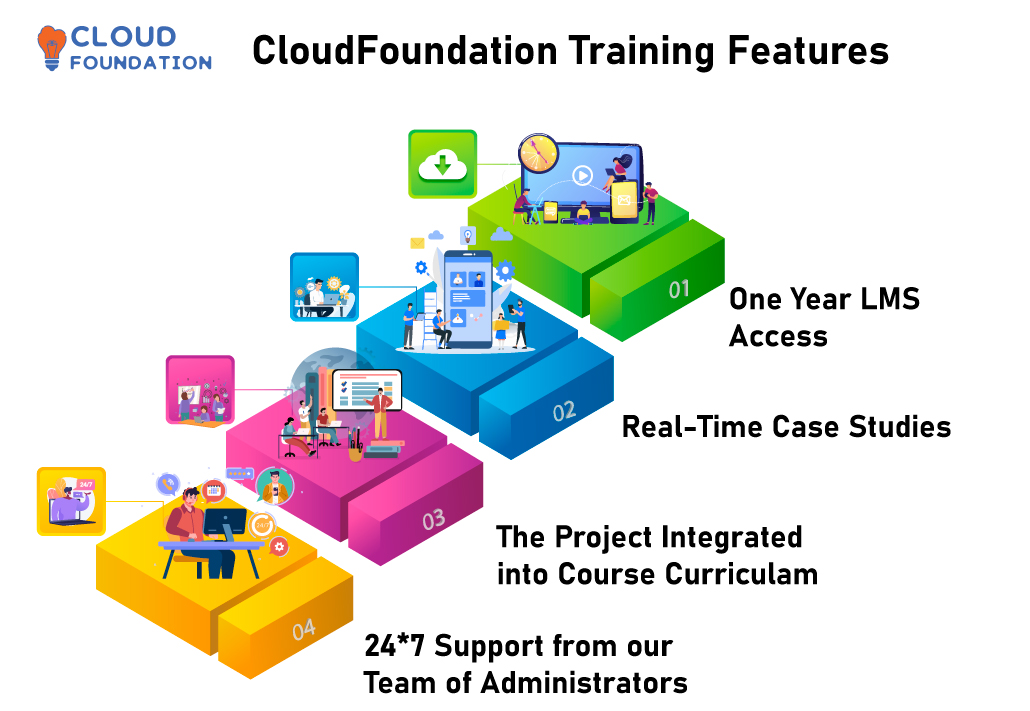Comptia Security 601 Training
⏰24 hours | ▶️ 24 Videos | 📣 9158 Participants | 🎓 3158 Reviews | 4.7 ⭐⭐⭐⭐⭐
Choose a Plan that Works for You
Self Paced
- Advanced sessions
- Interview Q&A
- Free study Materials
- Premium Technical support
Instructor Led Live Training
- Live Instructor
- Advanced sessions
- Interview Q&A
- Premium Technical Support
Corporate Training
- Live Instructor
- Advanced sessions
- Interview Q&A
- Premium Technical Support
Upcoming Batches PST
Weekday
| June 11(1 HR A DAY) |
| 07:00 PM PST |
| Enroll Now → |
Weekday
| June 26(1 HR A DAY) |
| 07:00 AM PST |
| Enroll Now → |
Weekend
| June 28(1 HR A DAY) |
| 07:00 PM PST |
| Enroll Now → |
Upcoming Batches IST
Weekday
| June 12(1 HR A DAY) |
| 07:30 AM IST |
| Enroll Now → |
Weekday
| June 26(1 HR A DAY) |
| 07:30 PM IST |
| Enroll Now → |
Weekend
| June 29(1 HR A DAY) |
| 07:30 AM IST |
| Enroll Now → |
Course Description
CompTIA security+SYO-601 training provides technical security skills and knowledge on cybersecurity and other security management services.
CompTIA security focuses on risk management and other information technology security loads.
Enroll with us to learn CompTIA security through our online classes under our expert trainers.
Our platform provides online courses with all-time support to understand your level of practice.
Securing an application by configuring strong firewalls and other tools and modules get learned here for executing well in your certification exam.
Upon positively confirming their skills by clearing the certification exam, learners will achieve tasks to give the values of discretion, integrity, and accessibility.
Join now to start exploring the technology and design your roadmap to your dream job.

Course Content
1.Attacks, Threats, and Vulnerabilities
- Different methods of social engineering techniques. Learn about Phishing, Spam,
- Identity fraud, Hoax, Credential harvesting, etc.
- Learn about potential indicators to determine the type of attack. Get familiar with the Malware, Password attacks, Physical attacks, Cloud-based vs. on-premises attacks, and Adversarial artificial intelligence (AI).
- Analyze potential indicators associated with application attacks. Get a good understanding of Privilege escalation, Cross-site scripting, Injections, Error handling, Replay attack, Application programming interface (API) attacks, Driver manipulation.
- Analyze potential indicators associated with network attacks. Learn about Layer 2 attacks, Domain name system (DNS), Distributed denial-of-service (DDoS), Wireless Attacks, Malicious code, or script execution.
- Explain different threat intelligence sources, actors, and vectors. Learn about Actors and threats, Attributes of actors, Vectors, Threat intelligence sources, Research sources.
- Explain the security concerns associated with different types of vulnerabilities. Get familiar with Cloud-based vs. on-premises vulnerabilities, Zero-day, Weak configurations, Third-party risks, Improper or weak patch management, Legacy platforms, and Impacts.
- Summarize the techniques used in security assessments. Get knowledge about Threat hunting, Vulnerability scans, Syslog/Security information and event management (SIEM), and Security orchestration, automation, and Response (SOAR).
- Explain the techniques used in penetration testing. Learn about Penetration testing, Passive and active reconnaissance, Exercise types.
2.Architecture and Design
- Explain the importance of security concepts in an enterprise environment. Learn Configuration management, Data sovereignty, Data protection, Geographical considerations, Response and recovery controls, Secure Sockets Layer (SSL)/Transport Layer Security (TLS) inspection, Hashing, API considerations, Site resiliency, and Deception and disruption.
- Summarize virtualization and cloud computing concepts. Learn about Cloud models, Managed service provider (MSP)/ managed security service provider (MSSP), On-premises vs. off-premises, Fog computing, Edge computing, Thin client, Containers, Micro services/API, Infrastructure as code, Serverless architecture, Serverless architecture, Resource policies, and Virtualization.
- Summarize secure application development, deployment, and automation concepts. Clear your concepts on Environment, Provisioning and de-provisioning, Integrity measurement, Secure coding techniques, Open Web Application Security Project (OWASP), Software diversity, Elasticity, Scalability, and Version control.
- Summarize authentication and authorization design concepts. Learn concepts of Authentication methods, Biometrics, Multifactor authentication (MFA) factors and attributes, And Authentication, authorization, and accounting (AAA). Given a scenario, implement cybersecurity resilience. Get to know about Redundancy, Replication, On-premises vs. cloud, Backup types, Non-persistence, High availability, andRestoration order.
- Explain the security implications of embedded and specialized systems. Learn about Embedded systems, Supervisory control and data acquisition(SCADA)/industrial control system (ICS), Internet of Things (IoT), Voice over IP (VoIP), Heating, ventilation, air conditioning (HVAC), Drones, Multifunction printer (MFP), Real-time operating system (RTOS), Surveillance systems, System on a Chip (SoC), Communication considerations.
- Explain the importance of physical security controls. Clear your concepts on Bollards/barricades, Access control vestibules, Badges, Alarms, Signage, Cameras, USB data blocker, Lighting, Fencing, Fire suppression, Sensors, Drones, Visitor logs, Faraday cages, Air gap, Screened subnet (previously known as demilitarized zone), Protected cable distribution, Secure data destruction.
- Summarize the basics of cryptographic concepts. Get to know about Digital signatures, Key length, Key stretching, Salting, Hashing, Key exchange, Elliptic-curve cryptography, Perfect forward secrecy, Quantum, Post-quantum, Ephemeral, Block chain, Symmetric vs. asymmetric, Lightweight cryptography, Steganography, Homomorphic encryption, Common use cases, and Limitations.
3. Implementation
- Implement secure protocols: Domain Name System Security Extensions (DNSSEC), SSH, Secure/Multipurpose Internet Mail Extensions (S/MIME), Secure Real- time Transport Protocol (SRTP), Lightweight Directory Access Protocol Over SSL (LDAPS), File Transfer Protocol, Secure (FTPS), SSH File Transfer Protocol(SFTP), Simple Network Management Protocol, version 3 (SNMPv3), Hypertext transfer protocol over SSL/TLS (HTTPS).
- Implement host or application security solutions. Learn about Endpoint protection, Boot integrity, Database, Application Security, Hardening, Self-encrypting drive (SED)/ full-disk encryption (FDE), Trusted Platform Module (TPM), Hardware root of trust, Sandboxing
- Implement secure network designs. Learn about Load balancing, Network segmentation, Network segmentation, Network access control (NAC), DNS, Out-of-band management, Port security, Network appliances, Access control list (ACL), Port spanning/port mirroring, Monitoring services.
- Install and configure wireless security settings. Learn about Cryptographic protocols, Authentication protocols, Installation considerations.
- Implement secure mobile solutions. Get to know about Connection methods and receivers, Mobile device management (MDM), Mobile devices, Deployment model, and Enforcement and monitoring of: (Third-party application stores, Rooting/jailbreaking, Side loading, custom firmware, Carrier unlocking, Firmware over-the-air (OTA) updates).
- Apply cybersecurity solutions to the cloud. Learn about Cloud security controls and Solutions.
- Implement identity and account management controls. Learn concepts like Identity, Account types, and Account policies.
- Implement authentication and authorization solutions. Get Knowledge about Authentication management, Authentication/authorization, Access control schemes.
- Implement public key infrastructure. Learn about Public key infrastructure (PKI),Types of certificates, Certificate formats, Concepts.
4.Operations and Incident Response
- Learn how to use the appropriate tool to assess organizational security. Learn Network reconnaissance and discovery, File manipulation, Shell and script environments, Packet capture and replay, Forensics, Exploitation frameworks, Password crackers, Data sanitization.
- Summarize the importance of processes, policies, and procedures for incident response. Learn the concept of Incident response plans, Incident response process, Attack frameworks, Stakeholder management, Communication plan, Continuity of operations planning (COOP), Disaster recovery plan, Business continuity plan, and Incident response team.
- Utilizing appropriate data sources to support an investigation. Learn about Vulnerability scan output, SIEM dashboards, Log files, Bandwidth monitors, Metadata, Protocol analyzer output, Net flow/slow.
- Use different mitigation techniques or controls to secure an environment. Get familiar with Reconfigure endpoint security solutions, Configuration changes, Isolation, Containment, Segmentation, and SOAR.
- Explain the key aspects of digital forensics. Clear your concept on Documentation/ evidence, Acquisition, Preservation, E-discovery, Data recovery, Non-repudiation, Strategic intelligence /counterintelligence.
5.Governance, Risk, and Compliance
- Compare and contrast various types of controls.
- Explain the importance of applicable standards, regulations, or frameworks that impact organizational security posture. Learn about Regulations, standards, and legislation; Key frameworks; Benchmarks /secure configuration guides.
- Explain why policies are important to organizational security. Clear your concept on Organizational policies, Credential policies, Data, Third-party risk management, Diversity of training techniques.
- Summarize risk management processes and concepts. Learn about Risk types, Risk management strategies, Risk analysis, Disasters, Business impact analysis.
- Explain privacy and sensitive data concepts about security. Great to know about consequences of privacy and data breaches, Notifications of breaches, Data types, Privacy-enhancing technologies, Roles and responsibilities, life cycle, Impact assessment, Terms of the agreement Privacy notice.
FAQ’s
❓ Do you offer any discount/offer?
✅ Yes, offers keep changing from time to time. You can chat with us or call our training coordinator for more details.
❓ Is there any demo video which I can watch before enrolling to the course?
✅ Yes, we have provided a Demo video section on each course page so that you can get a glimpse into the course you want to enroll.
❓ How soon after signing up would I get access to the learning content?
✅ Yes, we will provide access to all the learning materials after the complete payment for the course.
Related Blogs
Drop US a Query
Suggested Courses




MuleSoft Training
⭐⭐⭐⭐⭐
😃 221 Learners




Pega Training
⭐⭐⭐⭐⭐
😃 391 Learners




Rpa Training
⭐⭐⭐⭐⭐
😃 106 Learners




WorkDay Training
⭐⭐⭐⭐⭐
😃 158 Learners
A few of our students
















Contact Us